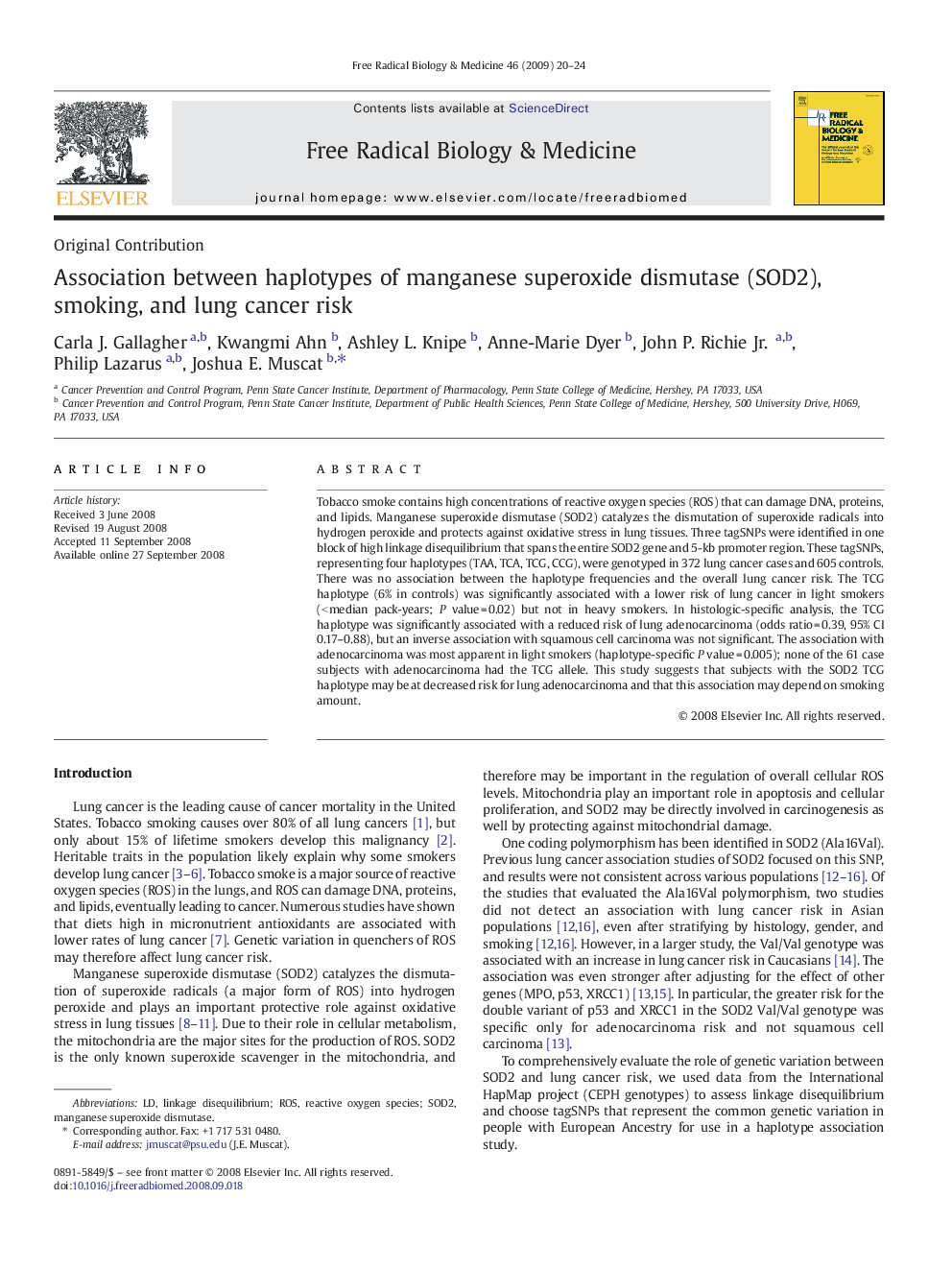| Article ID | Journal | Published Year | Pages | File Type |
|---|---|---|---|---|
| 1910360 | Free Radical Biology and Medicine | 2009 | 5 Pages |
Tobacco smoke contains high concentrations of reactive oxygen species (ROS) that can damage DNA, proteins, and lipids. Manganese superoxide dismutase (SOD2) catalyzes the dismutation of superoxide radicals into hydrogen peroxide and protects against oxidative stress in lung tissues. Three tagSNPs were identified in one block of high linkage disequilibrium that spans the entire SOD2 gene and 5-kb promoter region. These tagSNPs, representing four haplotypes (TAA, TCA, TCG, CCG), were genotyped in 372 lung cancer cases and 605 controls. There was no association between the haplotype frequencies and the overall lung cancer risk. The TCG haplotype (6% in controls) was significantly associated with a lower risk of lung cancer in light smokers (< median pack-years; P value = 0.02) but not in heavy smokers. In histologic-specific analysis, the TCG haplotype was significantly associated with a reduced risk of lung adenocarcinoma (odds ratio = 0.39, 95% CI 0.17–0.88), but an inverse association with squamous cell carcinoma was not significant. The association with adenocarcinoma was most apparent in light smokers (haplotype-specific P value = 0.005); none of the 61 case subjects with adenocarcinoma had the TCG allele. This study suggests that subjects with the SOD2 TCG haplotype may be at decreased risk for lung adenocarcinoma and that this association may depend on smoking amount.
